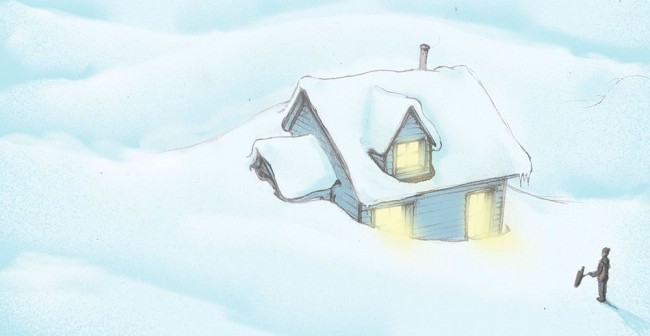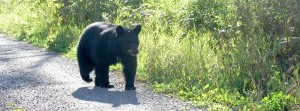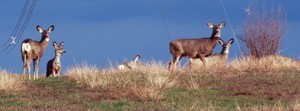
Photo Credit: Facundo Gastiazoro
Winter Cities: Designing communities for whatever way the wind blows
Whoever built my former house did not know or understand the direction of the prevailing wind or how drifts are formed. With unfailing regularity, after every winter storm, a two- to three-metre-deep snowdrift lay along the sidewalk against the south wall—a monstrous pile that had to be shovelled away before it melted and leaked water into the foundation and windows. With sinking stomachs and sore backs, we would stare into the dark morning, hoping some miracle had sent the snow in another direction.
The house was not unusual; neither was the drifting snow plugging the residential street where it was located. Rectangular buildings along right-angle street grids have long dominated northern BC communities: streets that often match the direction of winter winds. It is surprising how little attention was given to designing communities relative to the long months of frigid weather.
As the crystalline form of water, snow moves downward with gravity and laterally with air currents. The amount carried by the wind is proportional to wind speed. A drop in wind speed means a portion will be deposited. Simply put, when blizzard winds hit a gulley, cliff edge, hedgerow or corner of a building, their speed decreases and a drift forms. Backcountry skiers are well aware of cornice dangers on cliff edges, formed as drifting snow stretches out from the rock over empty space.
What does this have to do with living in the North? Like the house with the monstrous drift, if the configuration of features relative to the direction of the prevailing wind creates a zone in which wind speed drops, then a lot of snow will pile up in a hurry.
Why the snow crossed the road
In Terrace, a large sports field allows strong northerly winds to pick up snow and deposit it into a dip in the land, which happens to be the road. The drifts in that location are notorious. To eliminate them, snow fencing or a windbreak of evergreens set back from the road’s north side would catch snow before it drifted onto the road. Another solution would be to elevate the road so it would be blown clear, with the snowdrifts forming to the lee side. But the road and the winds remain the same and, after every winter storm, long-term residents avoid travelling down that particular street.
When wind speed increases, the amount of snow it can carry will increase. Wind funnelled between buildings speeds up and will scour snow out of the area. This might be an advantage for snow shovelling, but the wind-tunnel effect and blowing snow make walking difficult. Blasts of blowing snow can be a hazard on streets oriented into prevailing winds due to low visibility and the need for physical strength.
River valleys, with their strong outflow blasts, are especially susceptible to high winds, which increase wind-chill levels, making frostbite more likely and stressing livestock. Even energy bills increase as blizzards blast heat away from buildings. The lower Skeena Valley is notorious for strong outflows in mid-winter, winds that roar down Highway 16 and make driving and living cold and challenging. For someone who purchases property in the summer in one of the scenic rural communities along the Skeena River, the gale-force winds of January and February must come as a severe shock.
Changes to buildings and roads to address wind and snow problems, though, are unlikely to occur in most northern towns. We have a historical tendency to transport southern living solutions to northern climates, rather than design for the factors that dominate winter months. The cost of modifying existing infrastructure to increase winter liveability is perceived as too high.
Curbing the cold
A few places, though, have embraced winter weather. As part of a global network of larger centres defining themselves as Winter Cities, Prince George has adopted an official community plan (OCP) celebrating its characteristics “defined in part by the cold, snow, and ice of the winter months.” During the OCP’s development, residents identified winter’s recreational and cultural attributes as part of Prince George’s attraction. Rather than fighting our northern seasonal cycles, this OCP declares winter as integral to the city’s identity, with goals set to address winter-specific design. Policies are laid out requiring winter use to be considered in future developments of streets, transportation systems, public spaces and buildings.
Prince George maximized winter liveability by adjusting zoning bylaws, including covered walkways to restrict snow accumulation and increased safety by avoiding sudden snow dumps off roofs and awnings. Large buildings are required to have snow management plans and winter’s limited palette is mitigated through mixed landscaping of evergreens and deciduous trees. Other guidelines encourage buildings to be oriented to maximize sun exposure, especially in the low sun angles and long shadows of winter.
Other Canadian cities have carried the Winter City movement even further. For example, Edmonton has produced design guidelines for mitigating wind and blowing snow for both existing city spaces and new developments with evergreen hedges, street and building orientations in a northwest-southeast direction (to offset the prevailing wind and provide maximum winter sunlight) and sheltered “warm-up” alcoves to encourage outdoor city use. Its Winter City program is designed to increase winter happiness and economic activity through outdoor recreation spaces and programs, increased lighting, playful lighting displays and development of winter community spaces. Edmonton encourages its citizens to ignore the blowing snow and get out and enjoy winter.
Solutions to strong winds and drifting snow are often quite simple. For the house with the chronic snowdrift problem, if only an evergreen hedge had been planted upwind to break the wind, even its problems could have been eliminated. Long after we moved away, I would drive by the house and debate whether I should knock on the door and ask them how they were making out with their huge snowdrifts. But I never did, and the subsequent owners must wonder why all the snow in the neighbourhood ends up along the south wall of their house.
For further information on the Winter Cities movement, check out For the Love of Winter: Edmonton’s Winter City Strategy and the Winter Cities Institute (www.wintercities.com). Edmonton hosted a conference for winter cities last January and the World Winter Cities Association for Mayors meets in Sapporo, Japan in 2016.




